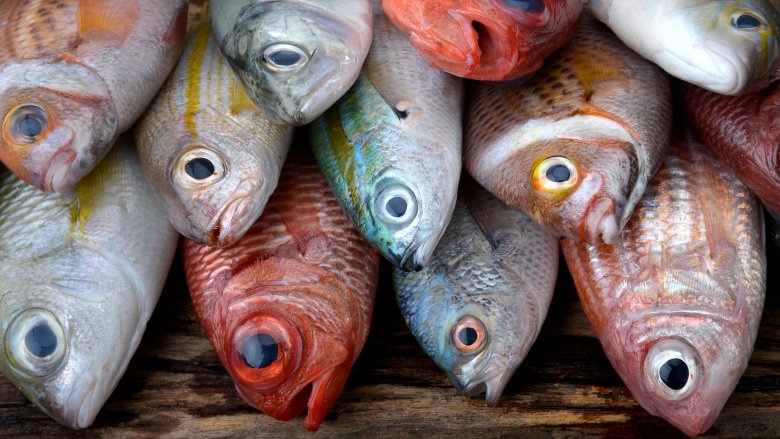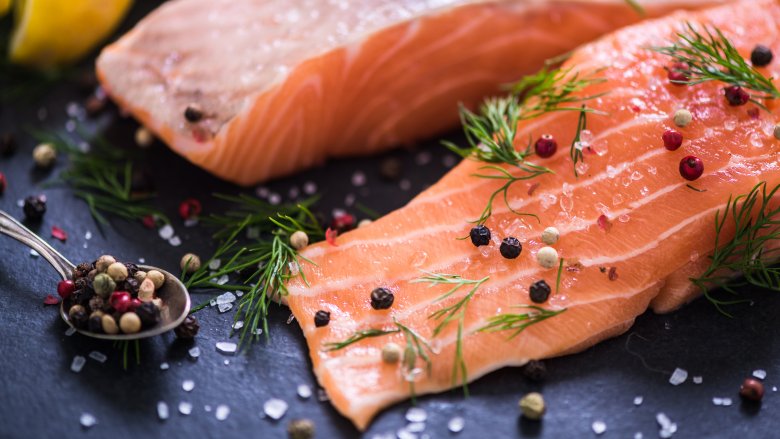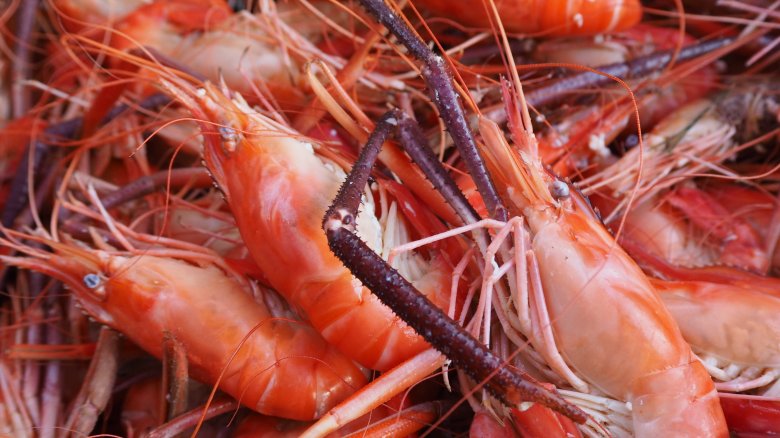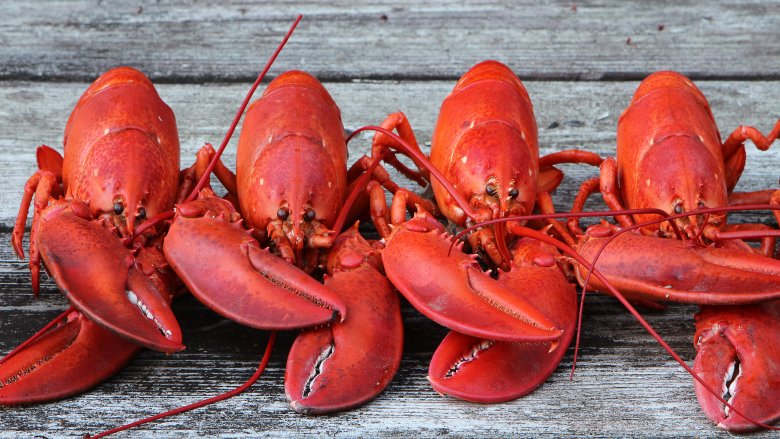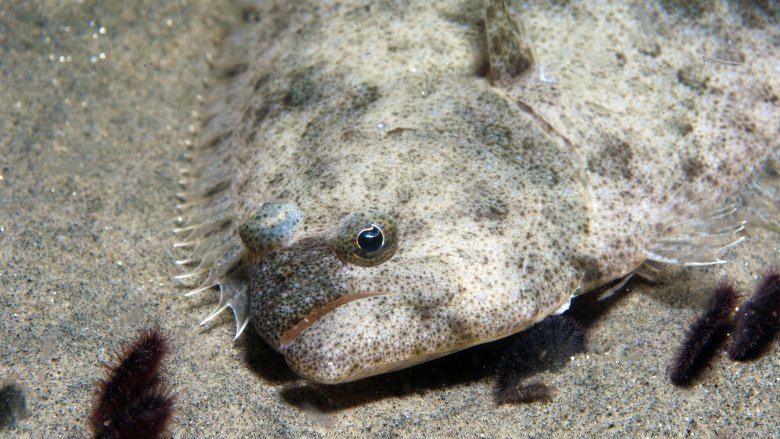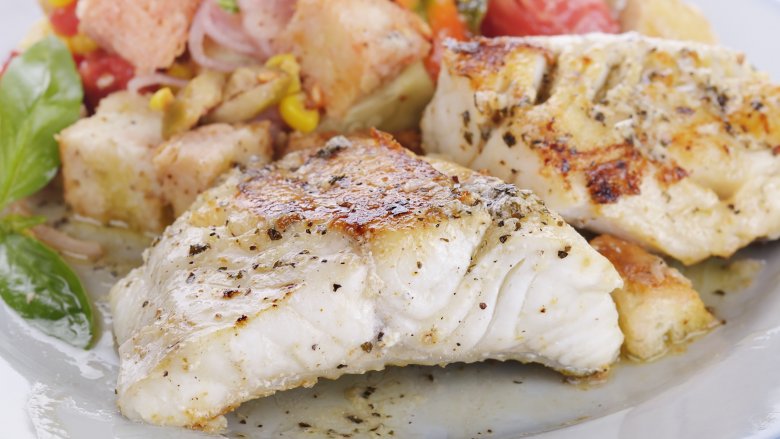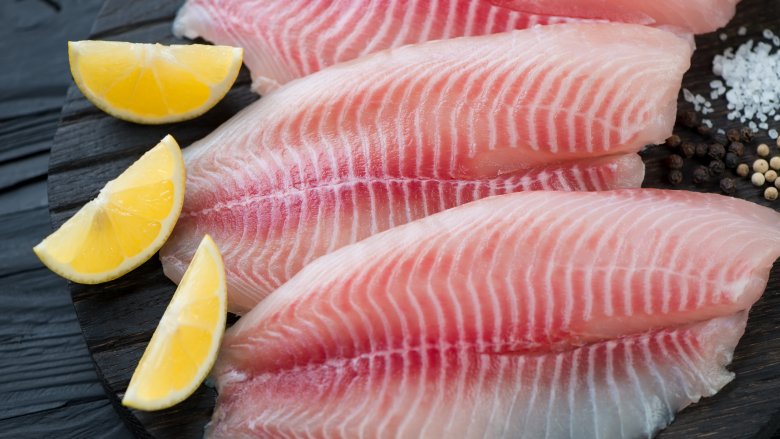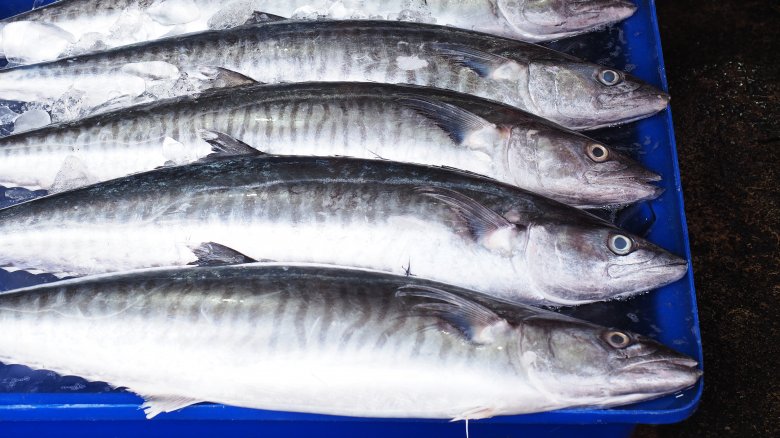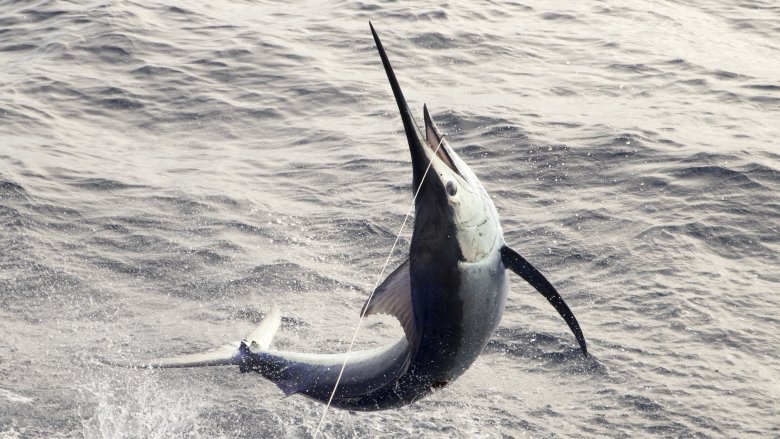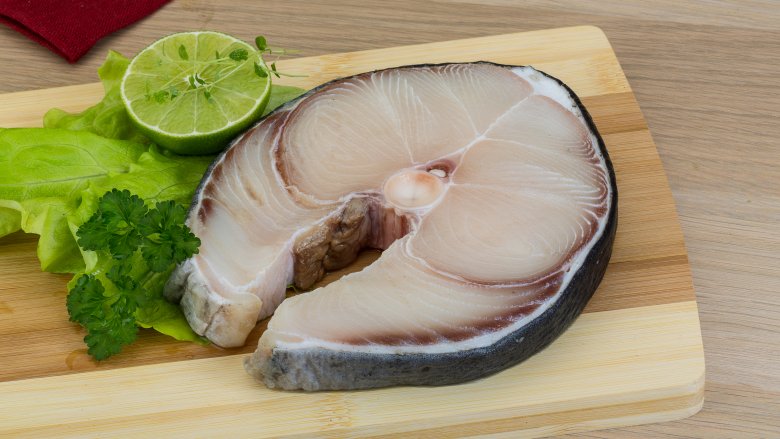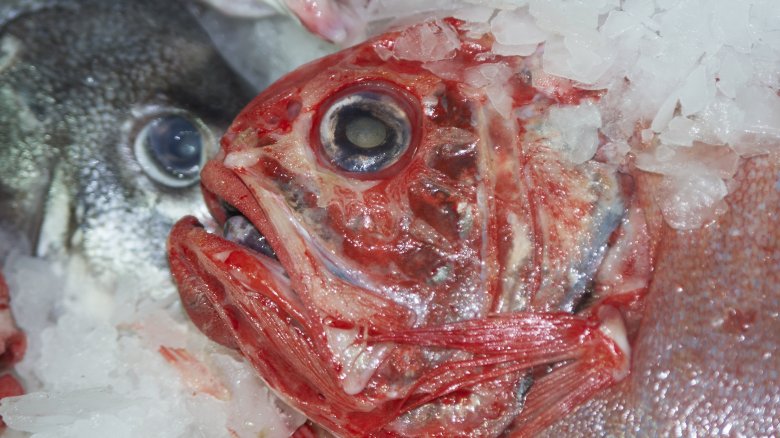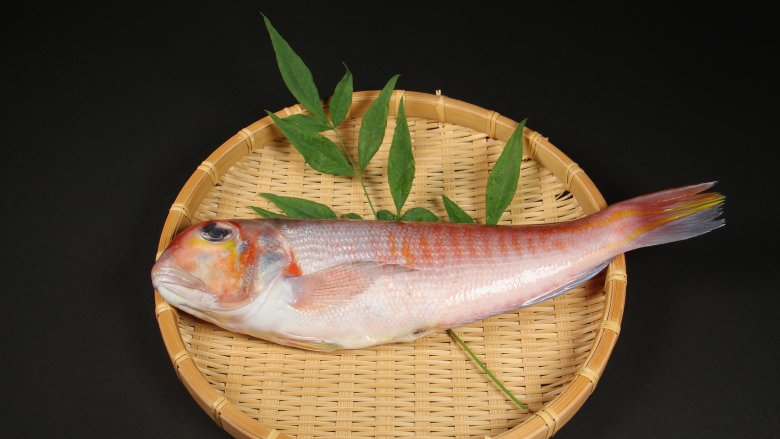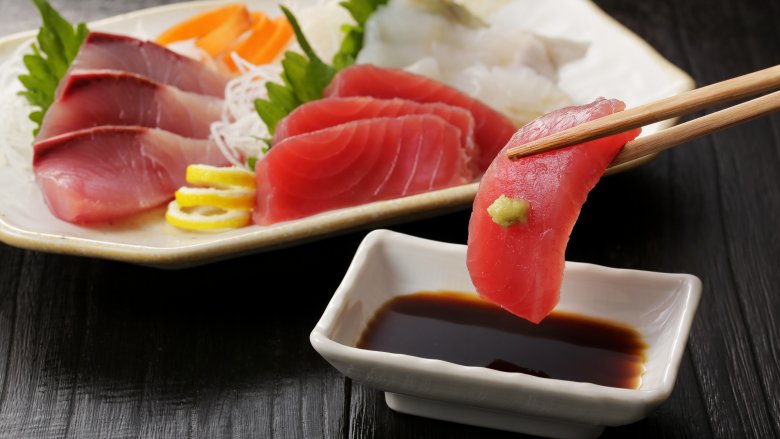7 Types Of Seafood You Should Be Eating And 7 You Shouldn't
One of my favorite things about living in coastal Florida is the access to fresh, delicious fish. Whether it's mullet from Terra Ceia Bay or grouper from the Gulf of Mexico, there's no shortage of seafood to delight your palate.
But it's super important to be careful with your fish consumption because of both health and sustainability issues. Some fish have a high mercury content, which makes them potentially dangerous if you eat too much. And other species of fish have been over-fished to the point of population decline. So it's important to be smart and informed about your under the sea options. Here's a list of seafood you absolutely should be eating, and others you should avoid.
Do eat: Salmon
Arguably one of the most popular fish in the United States is salmon, with its pink flesh and distinct flavor that is decidedly un-fishy. It's delicious in both raw and cooked form, so it's often found in sushi and standard American cuisine alike. And there are several kinds of salmon to pick from, ranging from the aptly-named King Salmon to Sockeye and Coho varieties. You can get it fresh from a fishmonger if you're lucky, but frozen is totally fine too — you'd be surprised how good it is.
In addition to its flavor and versatility, salmon can be super sustainable, whether it's fresh from the waters of Alaska or farmed in fisheries. Salmon is also low in mercury, and safe enough even for pregnant women to eat — in fact, it's recommended for healthy fetal growth and development. So definitely stock up on the salmon.
Do eat: Shrimp
Shrimp are a beloved staple of many cuisines around the world, even before Bubba extolled their virtues and many preparations in the film Forrest Gump. It's not surprising, given their mild flavor, pleasing texture, and easy preparation. Shrimp are extremely mild in flavor, as well as healthy, given that they are low in calories and high in protein. They're also plentiful in certain regions, like the Gulf of Mexico, rendering them inexpensive and available.
There are a lot of species of shrimp out there, so it can be a little tough to figure out which ones are sustainable, and which ones are not. Fortunately, there's plenty of information out there about what shrimp are best to eat, and which ones aren't. Additionally, most grocery stores label their shrimp, so you can tell right away if they're the best kind to buy. Plus, shrimp are typically low in mercury, making them a nutritionally safe choice.
Do eat: Scallops
Scallops, with their pleasing texture and delicate flavor, are an excellent seafood choice. Once shucked (which is how they're usually sold), they are simple to prepare — just be careful not to overcook them, which is easy to do. All it takes is a quick sear in a super hot pan for them to be cooked to perfection. And while they're more expensive than shrimp, they're worth the extra cost because of their uniqueness.
In addition to being delicious, they are ranked as sustainable in a variety of wild and farmed varieties. They're also low in mercury according to Consumer Reports — good news for us scallop lovers. And while you can get them frozen, they really do taste better if they're fresh from the Atlantic Ocean. Additionally, dry scallops are preferred over wet scallops as wet scallops can be bland and difficult to brown.
Do eat: Lobster
Known for their scarlet color (once cooked) and their delicate flavor, lobsters are a favorite food among fish lovers and land lubbers alike. They're often served completely intact, along with a tool to help you crack the shell and a bib to keep your shirt free of stains. These crustaceans are found in the waters of the Atlantic off the east coast of the United States, and are specifically iconic to the state of Maine.
The lobster industry has done a pretty remarkable job of ensuring that lobsters are ethically sourced and certified sustainable. For example, lobster cages are built to allow young, small lobsters an easy escape, catching only older, bigger lobsters. Additionally, very large lobsters are not to be harvested as they are prone to be fertile, maintaining a stable population. Pregnant lobsters are protected, too. Plus their mercury levels are safe, ranked as one of the best choices by the FDA.
Do eat: Pacific halibut
Of all the whitefish out there, Pacific halibut is among the best because of its delicate yet firm texture, and its sweet and mild flavor. It's also a breeze to cook, whether you bake it, poach it, steam it, or throw it on the grill. These fish — which can weigh up to 500 pounds — are found in the Pacific Ocean (of course) from California up to Nome, Alaska, and over to the waters of Japan. They're in season from March through October, with peak being May through September.
Pacific halibut are certified as sustainable according to the Marine Stewardship Council. It's also low enough in mercury that adults can enjoy four servings per month without worry. However, watch out for Atlantic halibut, which is not at all sustainable, as the population has been depleted from commercial overfishing, so keep that fish off of your menu.
Do eat: Mahi mahi
If you're at a restaurant and you see dolphin or dolphinfish on the menu, don't freak out — that's just mahi mahi, which is not at all related to the beloved mammals of the same name. Mahi mahi are thin-skinned and firm, with flesh that has a light pink hue and a sweet flavor. It's easy to overcook, so set a timer, or note when it's flaking and remove from heat promptly. When cooked properly, this fish is flaky and delicious.
You'll find mahi mahi in tropical and subtropical waters, often under floating objects like boats. They spawn often, grow fast, and have large ranges, making them a hearty fish that's a sustainable choice. And their mercury level, while not the lowest out there, is on the lower end, so even pregnant women can enjoy up to six servings a month.
Do eat: Tilapia
It's easy to thumb your nose at tilapia, but it's actually a really great seafood choice. For one it's cheap, probably the best bang for your buck out of the myriad of fish options out there. It's also plentiful and ubiquitous — in fact, it's the fourth most popular fish eaten in the United States behind tuna, salmon, and pollock. And while some foodies may dislike the flavor because it's so mild, it appeals to folks who might otherwise be seafood-averse.
All this and it's sustainable too, as long as it's farmed in safe and proper conditions. Tilapia is also low in mercury, making it safe to eat for everyone. So the haters can hate all they want — that just leaves more tilapia for the rest of us.
Don't eat: King mackerel
King mackerel, or kingfish, are an extremely popular catch among recreational anglers in Florida and elsewhere in the coastal American south. This is likely due to the fact that they bite down hard and fast on bait, are speedy when they give chase (with recorded speeds up to 15 miles per hour), and can be a bit of a challenge to wrangle given their average weight of 20-30 pounds. That makes for good sport fishing.
In spite of these fishy virtues, the FDA advises against eating king mackerel due to their high mercury content, as do state authorities in Florida, Georgia, and North Carolina. In addition, there have been reports of ciguatera poisoning — with symptoms of nausea, vomiting, and creepy neurological symptoms — from king mackerel consumption, which is due to the fact that these fish consume toxic algae. That's two strikes against this royal swimmer, and all the reason you need to avoid it.
Don't eat: Marlin
Another fish that's very popular among anglers in Florida, Hawaii, and beyond is the marlin. It's not surprising, given their size — they can weigh nearly 2,000 pounds. And these powerful predators can power through the water at speeds of up to 60 miles per hour, rendering them among the fastest fish in the ocean. Plus they use their pointed bill to hunt, poking and slashing through schools of tuna and mackerel. That's a badass fish.
But as much as they might be a thrill to hunt, conservationists have grown increasingly concerned that marlin are being overfished, particularly in the Atlantic Ocean. Plus, marlin have elevated levels of mercury, and because of that it's recommended to avoid eating them if possible. It's best to leave them alone and let them do their thing.
Don't eat: Shark
Fewer fish are more popular (or haunting, depending on who you ask) in the American imagination than sharks. We have the Jaws movies to thank for that, which gave many of us nightmares and a healthy fear of open water. And it's not uncommon to see sharks here off of the west central coast of Florida (bullsharks roam the water here), as well as California, Australia, and other coastal locales. With a reputation as a fierce hunter, it's no surprise that sharks would be a hunter's ultimate conquest.
But sharks have been hunted recklessly, especially those seeking to make money selling shark fins. This practice has depleted shark populations to the point of catastrophe. And the mercury levels found in shark meat can be far and away above the levels deemed safe by the FDA, which is why they've placed shark on the list of fish choices to avoid. So for the health of sharks and humans alike, don't eat shark meat.
Don't eat: Orange roughy
Orange roughy, previously known as slimeheads because of their mucous-slick heads, were largely left alone by fisherfolk for many years. They were mostly known only to scientists until the 1970s, who studied these deep sea dwellers and christened them with their indigenous name.
However, once commercial fishing had depleted shallower waters, fisherman began to drop their hooks and nets deeper in search of another viable seafood option. The result was the orange roughy, now with a new and more appetizing name, became a popular catch, swimming their way into kitchens around the world. And in a short while, these fish from down under were severely depleted due to sudden and massive overfishing, coupled with the fact that they don't reproduce until they're 20 years of age. So honestly, it's no surprise they're in short supply and should be left alone. Couple that with their high mercury levels, and they're just not a viable seafood option.
Don't eat: Swordfish
Swordfish are a majestic sight to behold, with their long, pointy front beaks and their shimmering bodies. And when cooked, swordfish is meaty and dense in texture, as well as mildly sweet in flavor. And although the swordfish population fell to troublesome levels in the 1990s, thanks to protective legislation, it has been on the rebound ever since. Today, swordfish have achieved successfully sustainable levels, making them once again an option for fish lovers.
The problem with swordfish, then, is not that they're endangered or overfished — it's their high mercury content. Starting as far back as 1970, mercury levels in swordfish were found to be of high enough concern for for consumers, a trend that continues today given that the FDA has listed swordfish as a fish to avoid. You're better off with safer options.
Don't eat: Tilefish
The tilefish is a multicolored fish with distinctive markings, earning it the nickname "the clown of the sea." It has a sweet flavor and a firm texture, and can be prepared in a variety of ways, from baking to frying. And while they may grow slowly, they can achieve a length of up to four feet, making them attractive to anglers on the Atlantic coast and in the Gulf of Mexico.
But just because you can catch them doesn't mean you should eat them. Even though the tilefish population is healthy, thanks to some responsible wildlife management by NOAA, they're still susceptible to overfishing. Additionally, the mercury levels in tilefish are elevated to the point where they're not safe to eat. So let them do what they do best, which is clown around in deep water.
Don't eat: Bigeye and bluefin tuna
There are many different kinds of tuna out there, from yellowfin to blackfin to longtail. Some tunas, like the skipjack you find in light canned tuna, are not only sustainable and safe to eat, but also are recommended for consumption by the American Heart Association. Other tunas, however, should be avoided either because of population decline or unsafe mercury levels.
Of all of the tunafish in the sea, it's most important to avoid bigeye tuna and bluefin tuna. Bigeye tuna has high levels of mercury, which makes it unsafe to eat for many people. And bluefin tuna have been overfished to the point of potential extinction, making them an environmentally poor fish choice. I'm as bummed as the next sushi lover, but it's best to leave them alone in the hopes that the population will rebound.
